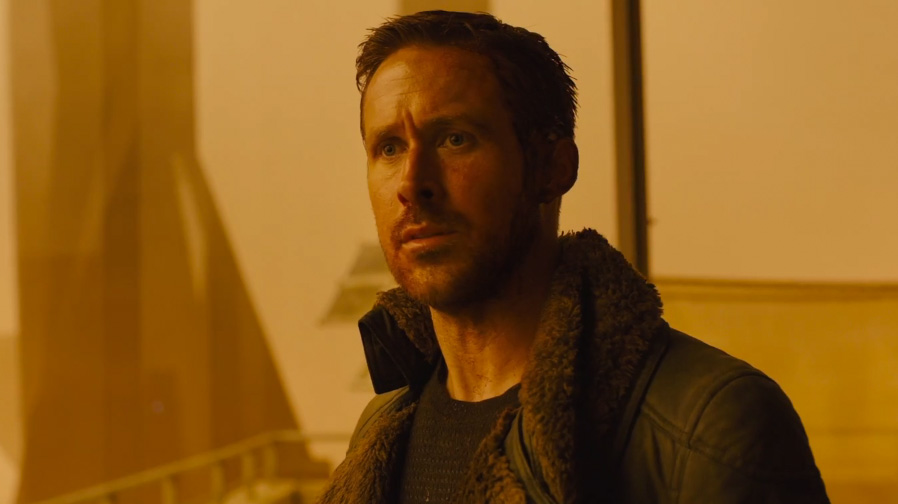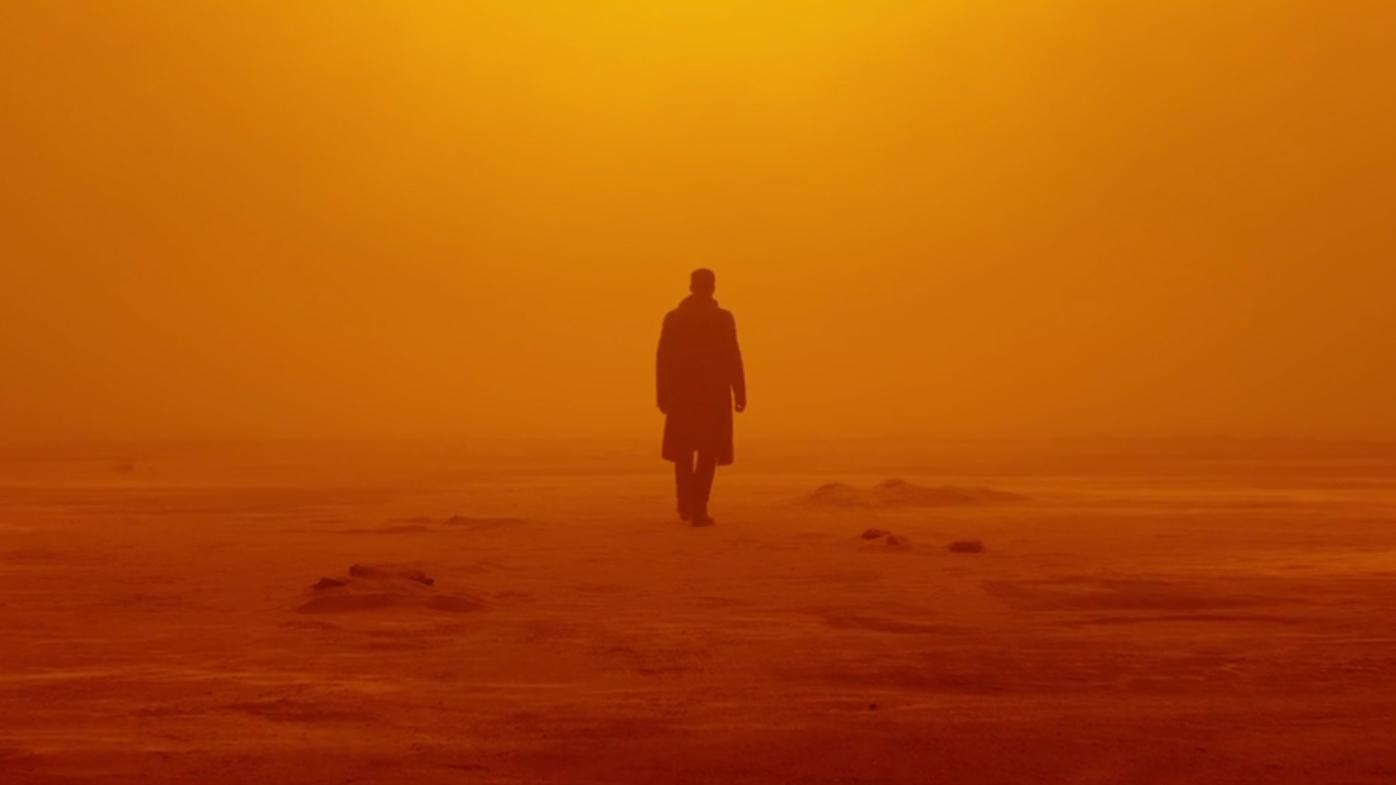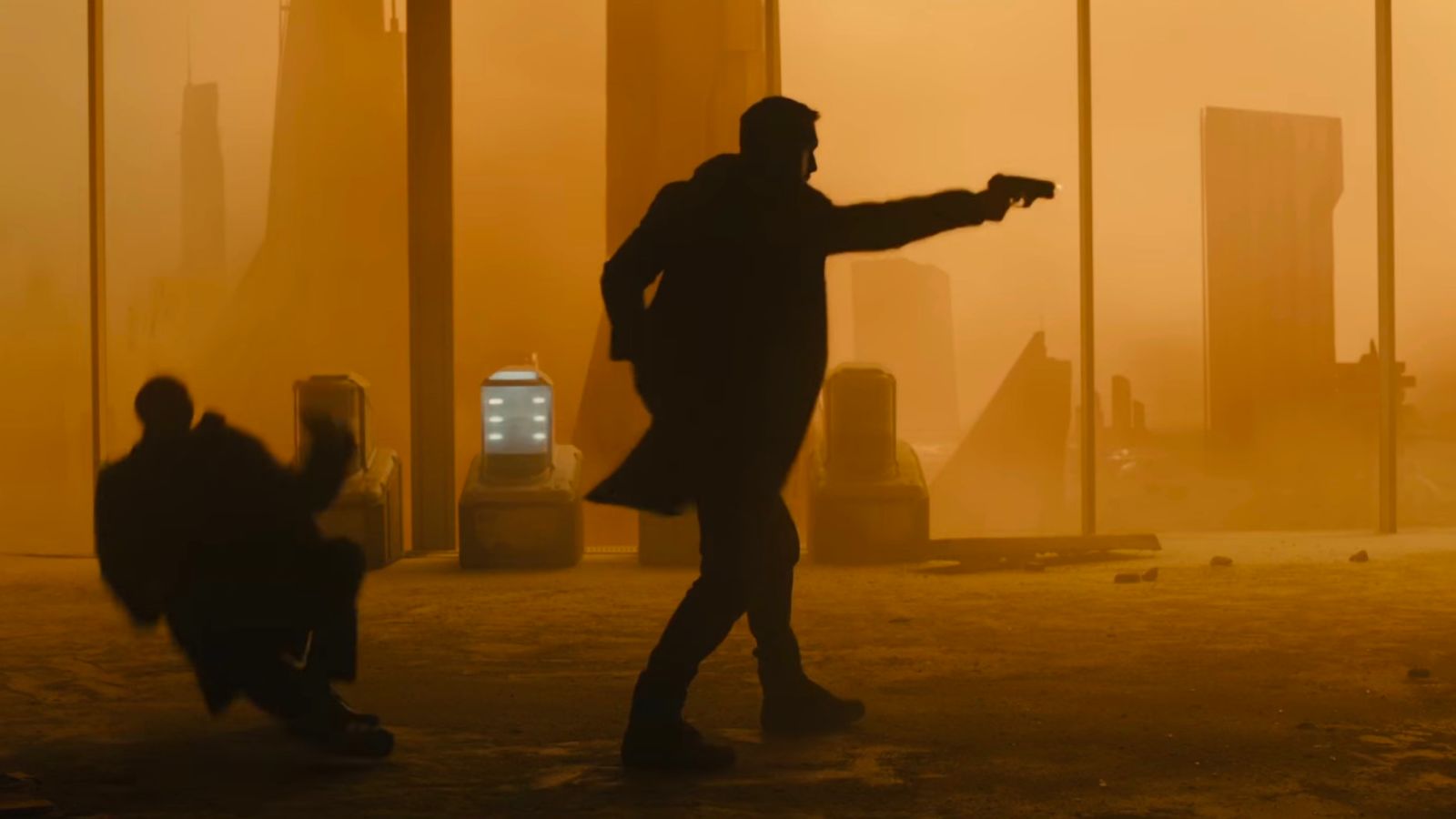
So many will be lost. All those memories, so meaningful to the individual, will fade away. Their lives had purpose, their narratives were inspired through experience, by the love or harsh teachings of a parent, a vengeful or forgiving deity, a chemical spur in the brain, by the ultimate randomness of interlinked cells or by the biochemical wishes of a scientist.
In the world of Blade Runners, replicants were created to serve a select purpose, some great or minor mission, depending on the wishes of the consumer. But just like any other human being, they consider themselves to be special, to have a soul. So what does it mean to have a soul? Is it just brain chemistry, a series of electric impulses in the brain? The term ‘soul’ is just a bit of language but our interpretation of it can define, separate or even limit us.
What if the soul is not some cosmic gift through natural birth, but the gift we obtain through the manner in which we live our lives? What if the soul is the journey of life, we receive one the moment we fight for the life another? What is the soul but the feelings we have for our memories – real and implanted? What is the the soul but the way we connect to each other emotionally?
These individuals lived great lives but we won’t hear all of their stories. Most of these stories have been lost in time. You hear about the extraordinary amount of lives lost in great tragedies, disasters or wars. In a blink of an eye so many stories are lost forever. We wish they could have been preserved somehow, even if the individual never had a chance to tell their story.
But those who did manage to save, many of them honour the stories of those who got lost along the way. When Roy Batty from “Blade Runner” speaks about “all those moments will be lost like tears in rain,’’ he’s just not talking about his own life, he’s talking about all those other lives, all filled with intense moments of joy or sorrows, that meshed into oblivion.
When K from “Blade Runner 2049” lies down and stares into the falling snow, he represents every other warrior who died for a noble cause. He will be forgotten, he probably won’t be a significant name in the great replicant revolution but he was there, he gave up his life for this very cause. K is just like all the fallen soldiers whose names we never get to hear.
Some will be engraved on tombstones, when visitors come across their names, it will have no significance to them. But they were there. They were part of this great battle. Each of them mattered. Each of them would propel the forces of great change.
Even if the battles were minor, their lives mattered just as much. There are too many forgotten souls on this earth and they deserve a story that encompasses them all. I believe the story of Roy Batty was such one. I believe the story of K deserves to be among them. We should be grateful that such stories, real or imagined like “Blade Runner 2049,” exists to make us ponder the forgotten.
In this article I will delve into the seven reasons about why “Blade Runner 2049” has all the hallmarks of an enduring classic. These seven factors will continue to be honoured and admired by moviegoers now and into the future.
7. The Mighty Talent of Roger Deakins

The most influential aspect of “Blade Runner” has always been the visuals. From its opening alone; the lone eye staring at the futuristic hellscape, the fire rising in the dark sky, the massive buildings, the constant rain, the flying cars, the neon lights. It might not be a world we want to live in, but it’s a world we’d love to visit over and over again.
To honour to visuals of the original film was the least the filmmakers of “Blade Runner 2049” could do, but they even went one step further: they expanded the world, showing both its evolution but never modernizing it so that it feels alien from the first film.
The 1980’s tech is still there, the remnants of the “Blade Runner” which was set in 2019, but a lot has happened after that: a blackout would cause the loss of lives but also untold amounts of data, financial empires would tumble, replicants would become outlawed, a new breed of replicants (more obedient) would take the place of the old, a famine would strike earth, the Tyrell corporation would be bought out by Wallace Corporation.
If you want to know more information about the timeline between the first and last, I would suggest watching the great little short movies released before the movie – especially the last one, an anime that details the circumstances surrounding the blackout, is fantastic.
Now the creation of the world of “Blade Runner” cannot be credited to just one man; it’s the product of a conglomeration of several creative minds. But it would never have looked as beautiful without the talented eyes of Roger Deakins. Deakins has been one of cinema’s most prolific cinematographers, working with cinema’s greatest directors from (most frequently) the Coen brothers, Sam Mendes, and has worked on two Denis Villeneuve films (“Prisoners” and “Sicario”).
But “Blade Runner 2049” might the best work he’s ever done. Villeneuve keeps the slow pace, not just to honour the original but so that we can soak in Deakins’ visuals. From its familiar neon landscape of the version of L.A. to the dusty ruins of Las Vegas, everything looks harrowing, lived-in and drop-dead fucking gorgeous. Deakins made it look both futuristic and grounded. He’s not interested in surrealistic Gilliam-esque world. This world must feel believable.
It might expand the world of “Blade Runner”, but it never feels excessive like the “Star Wars” prequels. It feels as though we are looking not just into the future, but inside our own modern world: the materialism, the isolation, the loss of connection seems all too familiar. The damage of the natural elements by man is already here; we are already trapped inside our brightly coloured mobile screens.
Our advertisements are becoming just as hostile as in the world of “Blade Runner 2049.” We are already marketing on the existential despair of man – corporations are not interested in a cure, they are just interested in making their consumers as addicted as possible. It will only get worse.
But as long as we have the visual splendour of “Blade Runner 2049,” thanks to the visual artistry of Deakins, we can imagine that it can look beautiful.
6. The Humanity of Rick Deckard and Harrison Ford’s Best Performance in Years

It’s not easy seeing your favourite movie stars grow old. You don’t want those faces to change, you want them to be frozen in time. But things will change; it’s the nature of life, the brutality of time. What was once young and thriving will one day grow old and deteriorate. One day you will look upon that movie star you’ve watched since you were a kid and realize: “oh shit, he’s gotten old.’’
We’ve all been there. But sometimes it’s not necessarily the aging appearances of these movie stars that bother us the most: it’s the choices these movie stars make in the final act of their careers. Suddenly the legacy of one performer becomes overshadowed by a series of questionable roles. Nobody wants to see Al Pacino going from Michael Corleone to singing ”Dunkaccino” in an Adam Sandler movie. Nobody wants to see Robert De Niro go from “Raging Bull” to “Dirty Grandpa.” And certainly nobody wants to see the Pacino/De Niro duo go from “Heat” to “Righteous Kill.”
When it comes to Harrison Ford, it’s been a long time since he has really impressed us. It’s not that he has been particularly bad, but he seems to go through the motions. There’s also the case of him being particularly zoned-out during interviews – rumour has it that Ford is a heavy pot-smoker – and there’s nothing wrong with that, but it seems like he’s not really interested in making much of a dent anymore.
In fact, in my humble opinion, before “Blade Runner 2049,” his most memorable role in the last decade has been his hilariously demented cameo in “Anchorman 2: The Legend Continues” – especially when he turned into a were-hyena.
He’s also been accused of rehashing his former glory. “Blade Runner 2049” is the third time he’s returned to an iconic role. The first time was with “Indiana Jones and the Kingdom of the Crystal Skull,” which was met with mixed results, though much of the blame lay on the script and filmmaking rather than Ford himself. Ford continued to give his equally iconic role of Han Solo (a role he didn’t want to return to but a hefty paycheck can change many sceptical minds) and gave him a respectable send-off in “The Force Awakens.” But it would be unfair to compare either Indiana Jones or “Star Wars” with “Blade Runner”.
While these other franchises were big moneymakers and were created for the sole purpose of entertaining the audience, “Blade Runner” was a financial flop and had much more lofty ideals. There were no exciting action set-pieces in “Blade Runner,” no big explosions and there’s little in the way of humour.
The adventures of Indiana Jones and Han Solo are fun and can be enjoyed by the whole family, while “Blade Runner” was meditative and bittersweet. It would receive critical and even academic acclaim later in life, but it’s far from a different creation. It would become one of the most cherished science fiction films (not to mention deeply influential) but it needed time before people could grant it such recognition.
Both Indy and Han Solo are both roguish icons, and the character of Rick Deckard, the main character of the first “Blade Runner” film, is anything but. He’s not even a sympathetic character, in fact he’s actually pretty despicable. He’s a self-loathing drunk who basically hunts down runaway slaves and executes them – the slaves in the world of “Blade Runner,” being the replicants. In the world of “Blade Runner,” you could perhaps call Deckard a victim of his time, but it doesn’t make his actions any less monstrous.
Unlike Indy or Han Solo, Deckard never has a cool moment in “Blade Runner.” If you call shooting an unarmed woman in the back as being ‘cool’ – though his gun is very cool. He would have continued his miserable existence were it not for the mercy of one wise replicant (Batty, played immortally by Rutger Hauer).
By saving his life, Deckard saw the errors of his ways; life is precious, whether it is manufactured by the whims of biomechanics or through natural birth. There was hope for redemption for him in the end, as he would run away with Rachael, a replicant he has fallen in love with. There is the question of whether Deckard is himself a replicant, but that is not as important as the lesson Deckard learns about life.
Ford doesn’t return to the sequel of “Blade Runner” wearing his iconic attire as he would in his return of Indy or Han Solo. His character transcends this iconic look and luckily, the filmmakers knew this. He’s not a Blade Runner anymore; he has given his life to protect life instead of taking it away. Holed up in an old casino, he passes his time accompanied of animals (the fact that they were created naturally or through biochemistry doesn’t matter to him anymore), reading books, listening to classic music until his final days. He’s still drinking but that is because he misses the love of his life, Rachael.
Ford gets to chance to shine in one particular beautiful scene, where Wallace (Jared Leto) tries to seduce Deckard into giving up poignant information that will endanger the life of his daughter, by giving him the opportunity to be with Rachael once again. When Deckard sees a newly cloned Rachael, we can see the grief in Ford’s eyes; you see how much he wants to be with her.
Perhaps the old Deckard would have given Wallace the information he desired, but he’s wiser and better man now. The future of the replicants, the life of his daughter, is far more important than coming closer to the happiness he once had in his life.
Director Denis Villeneuve, pushed Ford to give a great and sensitive performance. Ford seems to give it everything in that one small and beautiful scene. It’s a film that serves both Deckard’s character (his romance with Rachel which in the first film was slightly uncomfortable but is redeemed in the second) and Ford’s acting repertoire.
5. A Defiance of the Cynical Remakes/Reboots of Today

“Really, a sequel to Blade Runner?’’ was the first reaction from my father when he heard about the upcoming sequel. A somewhat understandable reaction considering the non-stop trend of rehashing old movies, exploiting whatever remnant of nostalgia is there to exploit. They’ll remake/soft reboot a series, without really understanding what made it so good in the first place.
There are countless examples of this: “RoboCop,” “Jurassic World,” “Total Recall,” “Ghostbusters,” “The Pink Panther” “Terminator,” etc. Many people might mention “Star Wars: The Force Awakens” being a more successful example, but let’s be honest: it’s essentially a remake in disguise.
“Blade Runner 2049” could have been another one of those cynical products. It could have been a series of lame call-backs to the original that included a forced cameo from Harrison Ford, filled with excessive action scenes. There are callbacks, but none of it feels like it was concocted by cynical marketing executives who wanted to add enough nerd-quota in the film (such as Disney’s “Star Wars”). We feel that the callbacks are part of the story and that they are made by filmmakers who loved the original universe.
While there’s more action in “Blade Runner 2049,” it’s respectable and not the central focus. In “Jurassic World,” the monster mayhem becomes the focus instead of the ideas and thriller set-pieces that made up the original “Jurassic Park.” There’s intimacy in the survival scenes of the original “Jurassic Park,” terror in the face of the children. It’s about humans being confronted by their hubris as they manipulate the natural world. In “Jurassic World,” we get this but its focus lies in the funny quips – ridding any tension in the process – CGI extravaganza and schlocky action. The magic of the original is lost.
The magic of the original “Blade Runner” is all over the sequel. It’s made with such respect that it’s hard to believe that such a big-budgeted film could still be made by a big studio. There’s none of that vapid corporate greed – except for the occasional product placement, specifically Sony – you would expect. There’s love and incredibly artistry, a complete defiance of what we are used to today.
Sadly, the film will probably not make enough money to see more examples of this, but we should feel lucky that we at least got one.